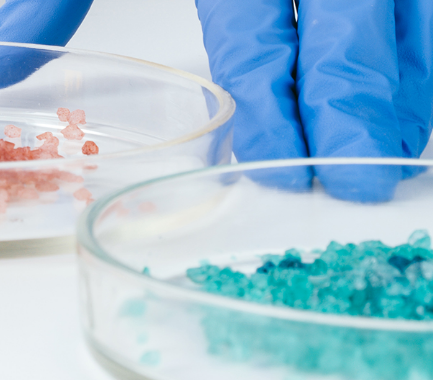Your contact
PENPET-Team - Hamburg

Christoph Meister
Sales
Tel. +49 (0) 40 - 675 7 99 30
sales@penpet.de
Get in touch with us.
Caustic soda
Caustic soda is an inorganic compound that belongs to the strong bases. The substance is used in dissolved form in numerous areas of application and is one of the most important raw materials in the chemical industry. The large-scale production of caustic soda is based on various methods of electrolysis of sodium chloride, in which caustic soda and the by-products hydrogen and chlorine gas are produced. The liquid caustic soda is then further processed by concentration and purification to form anhydrous, crystalline caustic soda.
Caustic soda is mainly used in dissolved form as sodium hydroxide solution. The compound is used to neutralize acids or to increase the pH of mixtures of substances. It is contained in numerous cleaning agents for industry and households. Caustic soda is an essential ingredient in harsh soaps, degreasers, and drain cleaners. Large amounts of the substance are used as a bleaching agent in paper-making. The pharmaceutical industry uses caustic soda as a starting material for various sodium salts, thanks to which acidic medicinal substances that are otherwise difficult to dissolve can be used in the manufacture of preparations.
Thanks to its strongly alkaline and cleaning properties, the compound is also used in the extraction of raw materials. For example, caustic soda is added to oil drilling fluids to neutralize acidic gases. The aluminum industry uses the substance to clean and process bauxite ore. In addition, caustic soda is an important starting material for syntheses in the chemical industry, which is used, among other things, in the production of sodium phosphate, sodium hypochlorite, sodium sulfide and formic acid.
At PENPET you get sodium caustic soda of the highest quality, from a reliable partner who will also meet your requirements in the long term. We look forward to receiving your inquiry for a bespoke offer. Prompt delivery of the solid can be made in packages with different weights.
CAS no. 1310-73-2
EINECS no. 215-185-5
Molecular formula: NaOH
Synonyms: Sodium hydroxide, sodium oxyhydrate, sodium causticum, sodium hydrate, caustic soda, soapstone, E 524
Areas of application: Detergents, strippers, neutralizers, raw materials for chemical synthesis and the pharmaceutical industry
More Information
Caustic soda is a strong base composed of equal parts sodium cations, which have a single positive charge, and hydroxide ions, which have a single negative charge. In pure form, these form a fine crystal structure so that the compound is present as a solid. If they are not completely cleaned or if they absorb moisture, these crystals can contain water molecules. Caustic soda then forms structures with varying levels of hydration, such as monohydrate and dihydrate through to heptahydrate. The liquid solution of the substance in water is called sodium hydroxide solution.
Caustic soda is in the form of white flakes or powder under normal conditions. The crystalline solid turns into a liquid melt when heated to 323 °C. The compound reaches its boiling point at a temperature of 1390 °C. Caustic soda is odorless. The solid substance has strong hygroscopic properties and draws moisture from the environment. The compound is readily soluble in water. Caustic soda is also easily soluble in some organic solvents such as methanol, ethanol and glycerin. With a pH of 14, the compound is one of the strongest bases.
Caustic soda is hygroscopic and very reactive, the substance must be stored dry and airtight. Even contact with the humidity in the air leads to the absorption of water and the transition of the compound to caustic soda. At the same time, caustic soda reacts with the carbon dioxide in the air to form sodium hydrogen carbonate.
The substance is not combustible. However, caustic soda reacts immediately with acids to form salts, which can lead to the generation of intense heat. Contact with strong acids can cause explosions. Dangerous reactions can also occur with chlorine, fluorine, phosphorus, alcohols and many other organic substances. When storing and processing the compound, it should be noted that caustic soda attacks metals and aluminum in particular. The compound should be stored in plastic containers.
Caustic soda presents acute and chronic health hazards. The compound is highly corrosive and can cause serious damage on contact with skin, even as a solid. Upon absorption of water from the skin, caustic soda immediately converts to a concentrated solution which reacts with the tissue layers and causes caustic burns. Recurring or long-term exposure can lead to chronic skin inflammation. After contact with caustic soda, residual amounts of the solid should first be removed with cloth or cellulose. The wetted parts of the body must then be rinsed thoroughly under running water in order to dilute and remove the dissolved compound. In the event of extensive skin contact, medical assistance must be called to the scene of the accident.
Eye exposure to caustic soda can cause severe chemical burns, permanent vision impairment, and blindness. After contact, the affected eye must be rinsed out quickly with water and an ophthalmological treatment must be arranged immediately.
Ingestion of caustic soda causes chemical burns and tissue damage in the mouth and digestive tract. After ingesting small amounts, it is advisable to drink water to dilute. In any case, seek medical attention immediately.
Caustic soda is considered a slightly water-polluting substance and should not be released into the environment.
